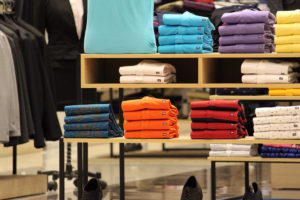
This is going to seem a bit odd to some of you but I want to know if you have an attitude? Store owners, do you have an attitude? Store Managers, do you have an attitude? Has anyone taken a look at the attitude of their employees? EVERYONE has an attitude, the statement isn’t necessarily a negative it can be positive. The problem is we have grown accustomed to thinking of it with a negative connotation. Why is that? Because in some form or fashion we have adopted the idea that an “attitude” shows our independence or ability to be self-reliant regardless of what others think. At times it can be very
An owner with a poor attitude makes the job more difficult for the managers who work for her or him. The “I’m the boss” temperament may be unstated but if that is how an owner thinks it can reflect
The attitude of the owner affects the attitude of the managers has a direct impact on your customers who don’t have to shop at your store. I happen to work for a company that has two stores in the immediate area. On more than one occasion we have heard comments from customers that they don’t like to go to the other store. They tell us the customer service is poor and the employees are not friendly. On the other hand the manager of the store where I work makes a point of telling the managers they are to do whatever they can to keep customers happy (within reason and without violating policies). Employees may get busy but they enjoy working for this manager. The atmosphere is welcoming and we make every effort to greet our customers and offer assistance when they walk into the building. I have gone into the other store and the climate is different. If a greeting is offered it is more of an obligatory hello that a genuine one.
What is the climate in your store? What do your managers and employees think about your management style? If you aren’t concerned think again. If your store employees are providing poor customer service to customers because of the treatment they receive it as a direct impact on sales and a direct impact on theft prevention. Shoplifters who have been interviewed have said that they target those stores where employees are unhappy. They don’t have to worry about someone trying to give them too much attention. If shoplifters aren’t receiving service, neither are your customers and that means no one is trying to sell let alone up-sell for a store.
Customer service starts with leadership. When the management team seeks to make the climate one where employees enjoy coming to work that attitude will be reflected in the interactions between workers and customers. Owners and managers cannot assume the team is happy. Truly anonymous employee surveys will help gauge what employees are thinking. They can also be a tool for seeking ideas about what employees might want to see done differently or an outlet for ways to improve. Happy employees make a world of difference. What is the climate in your world? Is everything great or is an attitude adjustment in order?

